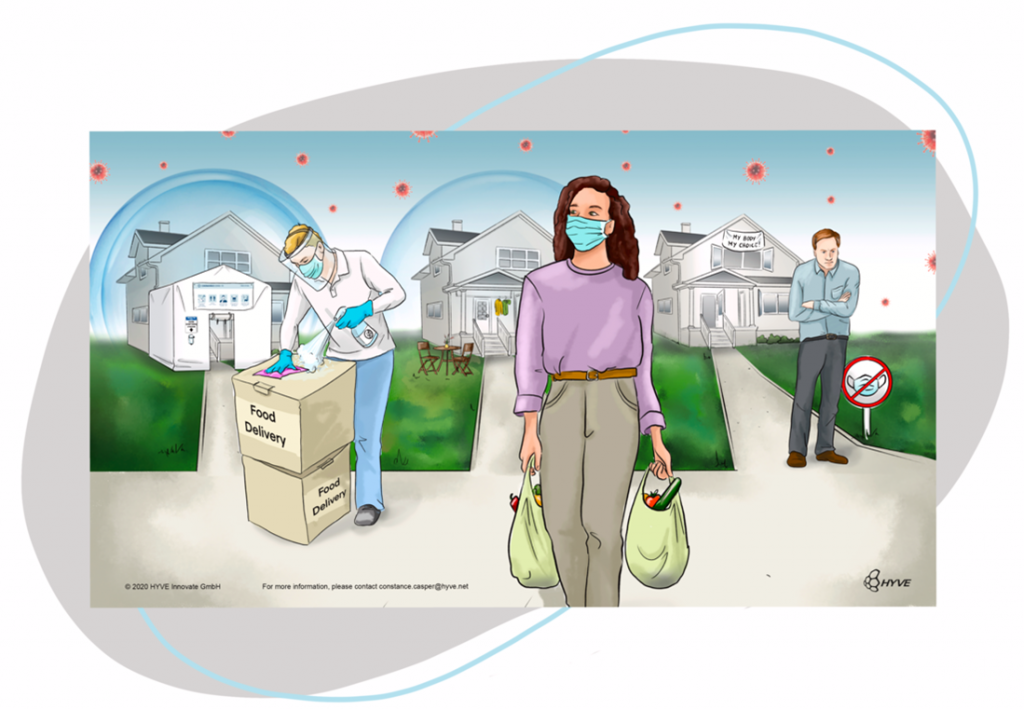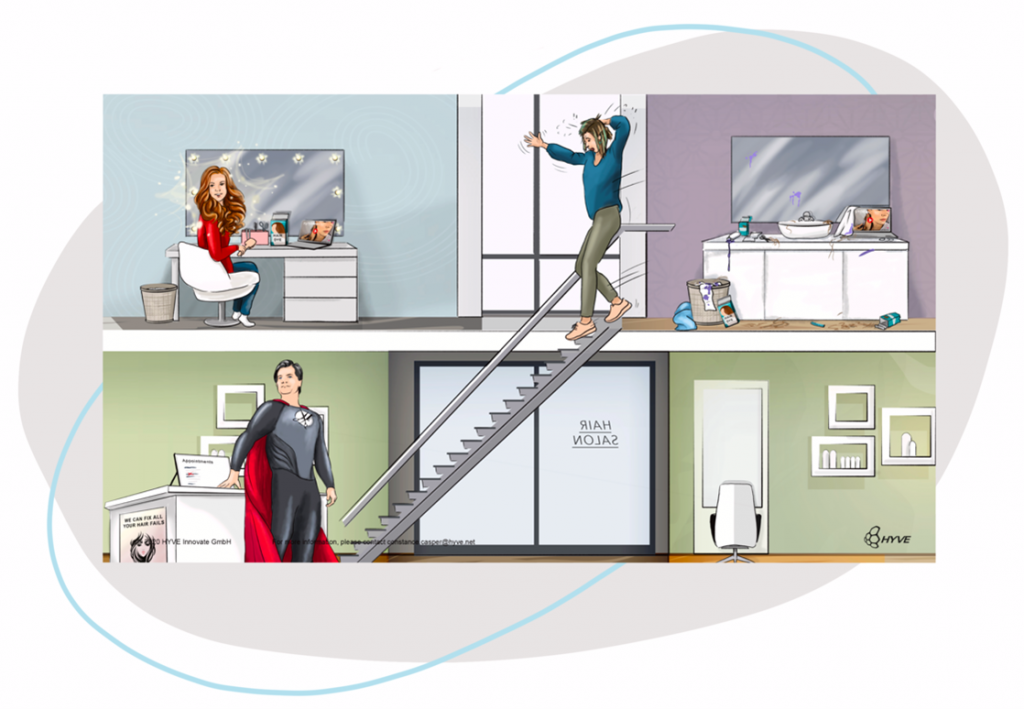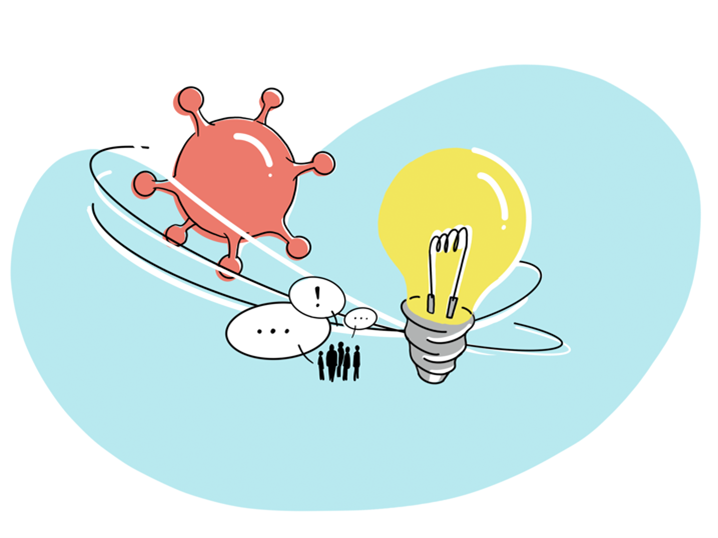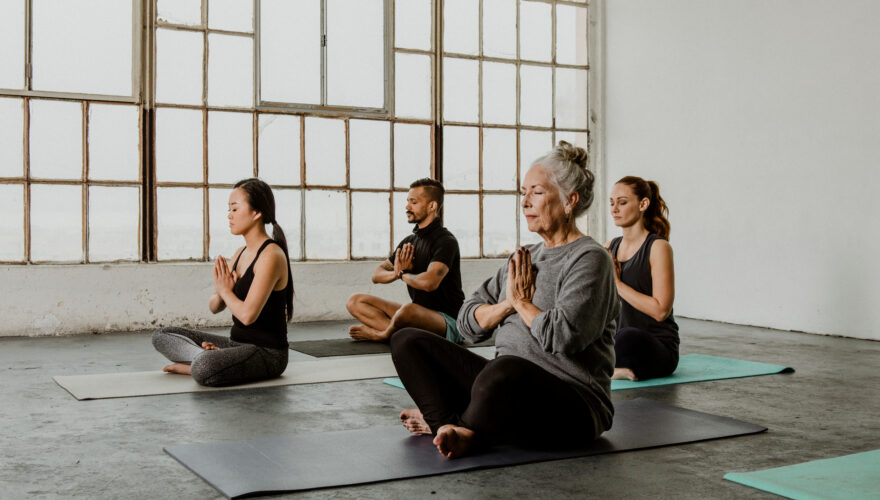Seeing hairy times as an opportunity

The coronavirus pandemic – an issue that has dominated our daily lives for the past year. By now, we are familiar with symptoms and the clinical aspects of the disease, are able to read national and international case numbers and curves with the confidence of statisticians, know the names of vaccines as well as famous scientists, and live with current restrictions to contain the spread of the virus. We have quickly developed new routines to cope with the corona daily grind.
kao and HYVE have taken a closer look at precisely those behavioral changes during the pandemic with the help of a Netnography to adapt kao’s innovation and business strategy as swiftly and agilely as we have ourselves as individuals during the past year.
kao is a Japanese chemical and cosmetics company headquartered in Tokyo with a subsidiary in Darmstadt, Germany, which has a long-standing partnership with HYVE. One of kao’s divisions manufactures products for professional hair care including the well-known brands Goldwell, Guhl, and John Frieda. Goldwell is mainly supplied to hairdressers, to whom we paid special attention during our joint project.
Netnography as a springboard to your innovation process
A key advantage of a Netnography is access to unfiltered information from experienced and highly involved users who are not influenced by the current state of research. In this process, consumer dialogue in online forums and in social media is analyzed by HYVE researchers on a specific topic.
For us HYVE Researchers, there is something magical about the Netnography. No HYVE method delivers deeper and more empathetic insights and is able to understand consumers or users as comprehensively. It analyzes what people, often under pseudonyms, express publicly on the net – without influencing them as researchers. This is why the Netnography is one of the most honest methods.
Constance Casper – Innovation Researcher at HYVE

HYVE shares the most important insights from a Netnography with the client in the form of storytelling. In addition, HYVE identifies, validates and elaborates so-called Opportunity Areas, which offer special potential for successful and truly customer-centric innovations.
A Netnography is therefore an ideal “springboard” into an innovation strategy accompanied by HYVE – from the first idea to the market launch of an innovation. The next steps in the innovation process are flexibly adapted depending on the project.
Everything starts with an idea, therefore an important next step is the ideation phase, where Opportunity Areas of the Netnography are first prioritized and aligned with the strategy of the company to finally generate concrete business ideas. Subsequently, you can iteratively create and test business models through Business Model Prototyping
Sophie Büttner – Innovation Researcher at HYVE
Netnography in times of hygiene dictates and lockdowns
Surely, we all find some hair in our soup at the moment – and right now we cannot rule out that it is our own.

Hairdressers were forced to close during the first lockdown and finally re-opened their salons under very extensive hygiene measures. In the second lockdown, hairdressers also had to temporarily “hang up” their scissors. Therefore, wild manes of hair, outgrown hairstyles, faded hair colors and unkempt beards accompany both professional online meetings and private grocery shopping. Many of us are also familiar with the DIY “Corona hairstyle”, made with household scissors or a razor; some might not only know it by hearsay.
As a supplier and close confidant of hairdressers, kao has recognized that the hairdressing industry is not immune to change. The challenge was to identify and understand it in order to keep kao’s innovation strategy on track.
It has always been important for kao to use methods in our innovation strategy that put the consumer first. In this project, I found it particularly interesting that the Netnography method is also suitable for highly topical discussions without having several years of social media data.
Karin Altmann – Market Researcher at kao
kao’s challenges:
- Development of a pandemic-compliant hygiene concept that can provide long-term support for hairdressers and their customers.
- Evaluation of the general behavioral changes of consumers in the course of the coronavirus pandemic.
- Focus on altered routines in the hairdressing world.
- Clarification of the following questions: What do customers currently expect from hairdressers when they enter a salon? What problems are hairdressers facing in these challenging times? How can kao support both end customers and hairdressers?
kao wanted to look at consumers and hairdressers in different markets in Europe who were affected by the first wave with varying degrees of severity. Therefore, HYVE conducted the Netnography in Germany and Spain.
Netnography Insights: surprising and promising insights for new innovations

I’m sure you’re curious about what insights the Netnography provided. Here are a few.
One surprising finding was that Germans and Spaniards seemed to be dealing with Covid-19 differently. Three types could be identified:
1. The Safety Maximizers, who want to minimize their risk of infection at all costs. Even if this means restricting themselves to a large extent in everyday life and possibly imposing more measures than necessary. For example, Safety Maximizers disinfect everything that enters their sphere, their home, from the outside world; even packaged food. Some even set up a quarantine zone in their hallway where “contaminated” clothing is placed or where street shoes are disinfected.
2. Rationalists adjust their behavior regarding the pandemic as they see fit. This means, they inform themselves through various media, take the opinions of experts seriously, and act based on this information. Rationalists, for example, think that wearing masks is reasonable and important due to aerosol transmission. On the other hand, disinfecting hands or objects is not very important to them, as in their view, smear infection is very unlikely.
3. Corona deniers, who consider all government measures excessive or do not recognize the seriousness of the disease.
Spanish consumers appeared to consist of more Safety Maximizers, while German consumers were mostly Rationalists.
These changes in general consumer behavior inevitably led to new customer expectations for the hairdressing world as well. For example, some customers expect visible disinfection of scissors, combs, and other utensils and carefully observe how hairdressers handle hygiene measures. If the measures are not implemented as expected, the salon might then be avoided in the future.

Hairdressers as heroes or outdated?
Is the opening of hair salons a wonderful promise for customers? Or have they turned into semi-skilled hair artists with YouTube tutorials and overpriced haircutting scissors during the lockdown? Is the DIY hairstyle so successful that the barber will no longer be needed in the future? Or will the opposite happen, and barbers will have to perform damage control on discolored, crooked cuts for months and will be celebrated as heroes, rescuing customers from hairdressing disasters? Our Netnography was able to identify the possible further developments of the hairdressing trade and its needs, and each one holds new opportunities, development possibilities, and potential for hairdressers of the future. These will be evaluated, refined, and further developed by HYVE and kao.
Outlook thanks to perspective

In times of change, our spontaneity and flexibility are especially in demand: those who act quickly and agilely are rewarded. At the beginning of the pandemic, we heard about successful companies which acted spontaneously and thus benefited from the crisis: distilleries switched their production to disinfectants, tailors sewed masks in record time and restaurants gave cooking classes via Zoom. kao also acted and provided free handwashing and disinfection products as well as face masks to all employees worldwide, to certain customer groups (including hairdressers), and to charitable organizations to protect their general health.
The Netnography was exactly the right innovation tool for kao. In order to offer hairdressers an innovative and helpful hygiene concept, a fundamental and in-depth understanding of consumer needs is required. This is the only way to develop tailor-made solutions. With the Netnography, kao was able to thoroughly understand the impact of coronavirus on their industry, keeping their innovation strategy on track.
To deepen the Netnography insights, kao is planning the next step of its Innovation Journey: interviews with hairdressers in Germany to better understand their concerns and obtain their perspective on the insights that were won out of the Netnography.
At HYVE, we believe that the crisis can be seen as an opportunity in many ways, and we look forward to supporting you in your innovation strategy.


